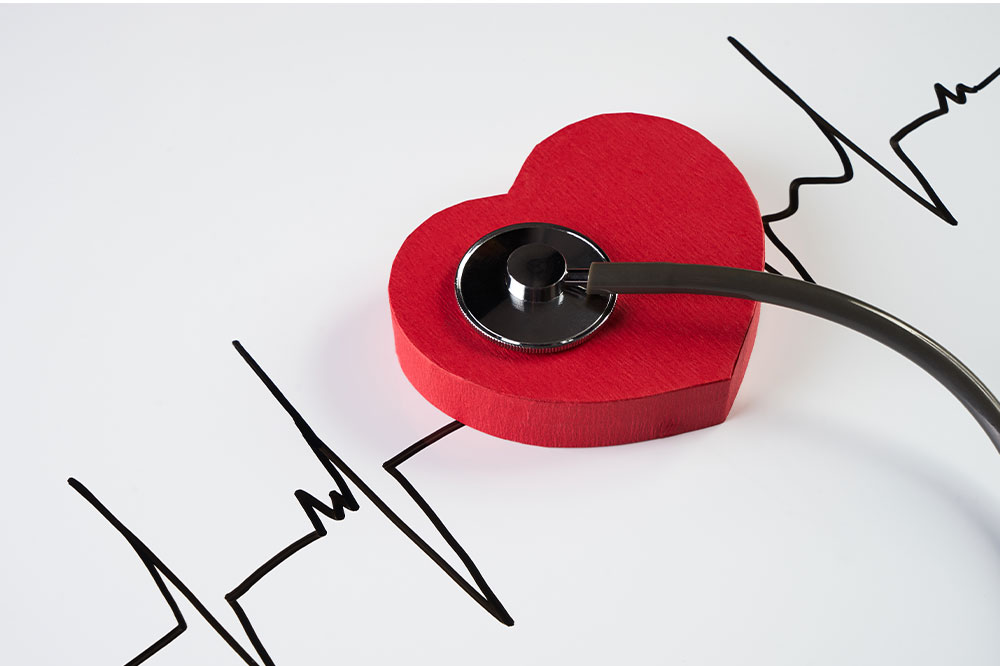
Arrhythmia – Symptoms, diagnosis, and management
Arrhythmia refers to an abnormal heart rhythm. When you’re at rest, your heart rate may be too fast or not in a regular rhythm. Arrhythmias can range in intensity from mild to severe, with or without symptoms. Arrhythmias can be treated in various methods but are not always necessary. The kind has a significant impact on the prognosis. Arrhythmias can occur anywhere in the heart and might be excessively fast, slow, or irregular.
Understanding arrhythmia
Arrhythmia is the medical term for an arrhythmic heartbeat. Your heart usually beats in a regular, coordinated pattern. However, problems with various heart organs or even the blood your heart pumps might disrupt your heart’s regular rhythm. A proper heartbeat is crucial because your heart pumps blood throughout your body, delivering it with nutrition and oxygen.
What is the risk of heart arrhythmia?
People with healthy hearts may suffer harmless irregular heartbeats on occasion. An irregular heartbeat, on the other hand, may signal a cardiac problem. Therefore, it is critical to monitor your pulse regularly. See a doctor if you notice it isn’t beating normally.
Symptoms
According to the arrhythmia, you may experience weariness, dizziness, or even faintness if your heart rate is prolonged. If your heart rate is excessively high, it may feel like racing or hammering in your chest. Over time, patients may grow less sensitive to abnormal heart rhythms. Many arrhythmias typically cause fatigue and decreased exercise tolerance.
Possible causes of arrhythmia
- Conduction system cells in the heart can activate spontaneously and generate electrical activity. This action may interfere with the heart’s pumping function.
- When the sinus node fails, or impulses are blocked somewhere in the conduction system, supplementary pacemakers elsewhere in the heart provide a “backup” rhythm.
- A disruption or delay in the electrical signals that govern the pulse.
- Another aspect of the heart is taking over as a pacemaker.
- The stiffening or scarring of heart tissue, changes in blood flow, damage to the heart’s electrical system, or changes in heart tissue.
- Extreme effort, tension, or strain.
- A varying level of electrolytes, hormones, or fluids in the blood.
- Particular cardiac treatments.
When an arrhythmia occurs:
- The heart’s natural pacemaker begins to create an irregular beat or rate.
- The normal conduction pathway has been interrupted or altered.
- The pacemaker has been moved to another part of the heart.
Detecting an arrhythmia
Arrhythmia diagnosis can be difficult, particularly those that only cause occasional arrhythmia symptoms. Doctors identify arrhythmias based on a patient’s physical examination, medical and family histories, and test and treatment results.
Among them are blood tests, a chest X-ray, an electrocardiogram (EKG), which detects and records the heart’s electrical activity, and an echocardiogram, which uses sound waves to create a moving image of your heart.
It may be necessary to wear a cardiac monitor for an extended period to detect intermittent arrhythmias. In addition, an invasive procedure called an electrophysiological examination may be done to analyze the heart’s conduction system.
Treatment options
Depending on the type of arrhythmia, we may use prescribed treatment, implantable devices such as pacemakers, cardioversion, or ablation to restore a normal heartbeat. Pacemakers are commonly used to treat slow heartbeats, but numerous additional options exist for managing rapid heartbeats. Cardioversion, which involves administering an electrical current to the heart via electrodes on the chest, is a standard treatment for arrhythmia. The electrical current resets or restores the heart’s usual rhythm.
Catheter ablation is a minimally invasive therapy that uses extreme cold or heat energy to destroy the arrhythmia-producing tissue. Some persons may be candidates for cardiac surgery on rare occasions.
Sustaining an arrhythmia
- If you’ve just discovered you have an arrhythmia, you’re probably filled with questions. You may be concerned about the seriousness of your condition and what it means for the rest of your life.
- It is normal to experience a range of feelings during this time, including doubt, dread, anxiety, and despair. See your doctor or nurse if it lasts more than a few weeks.
- Your long-term care for your cardiac rhythm issue is heavily reliant on you. However, if you have a firm understanding of your condition and how to treat it, you may be able to manage it more successfully.
Can someone who has an irregular heartbeat exercise?
Remaining healthy and feeling good requires exercise, even if it is as easy as walking. To avoid triggers, patients frequently develop a fear of exertion; nevertheless, this can occasionally be taken too far, leading to a decline in the person’s psychological and physical health. For example, if you have an arrhythmia, consult your doctor about the proper and safe degree of exercise. In general, if an activity causes you to feel faint, lightheaded, or excessively out of breath, you should stop doing it and seek medical attention.




